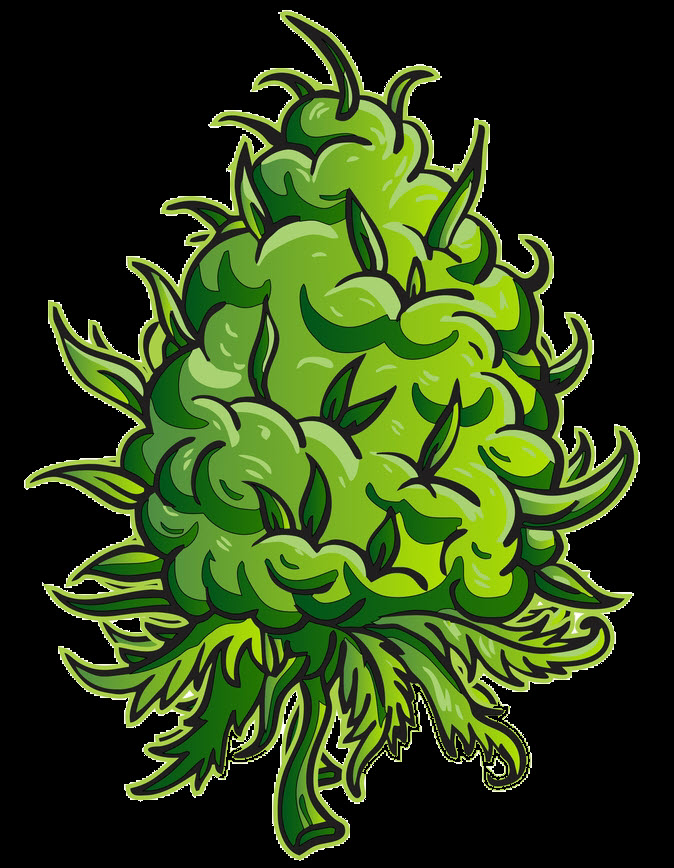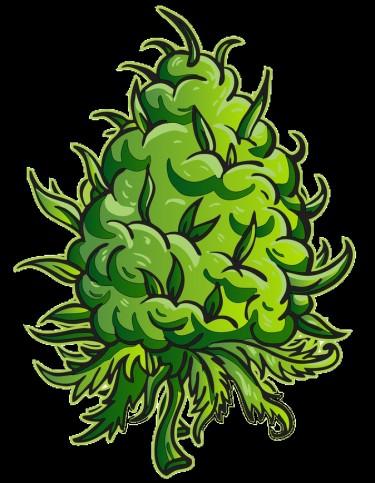Cannabis News
Got Bush? The Top 5 Tips for Growing Massive Bushy Cannabis Buds (In-Depth Guide)
Published
2 years agoon
By
admin

Cultivating cannabis is a beloved endeavor for many enthusiasts, as it offers a unique blend of passion, creativity, and self-sufficiency. Growing cannabis at home allows individuals to have complete control over the cultivation process, from selecting the strains to nurturing the plants until they flourish into bountiful harvests. This sense of empowerment and connection with nature is one of the reasons why people are drawn to cannabis cultivation.
Furthermore, achieving bigger and bushier nugs is not only desirable for its aesthetic appeal but also for its practical benefits. When cannabis plants produce denser buds, it means that the concentration of cannabinoids, terpenes, and other compounds is typically higher. This translates into more potent and flavorful experiences for users, delivering the desired effects more effectively.
From an energy efficiency perspective, maximizing the yield of cannabis plants can also be beneficial. By employing techniques that encourage bushier growth and larger colas, growers are effectively optimizing their energy usage. When plants produce more buds per square foot of grow space, it means that the energy consumed by lighting, ventilation, and other environmental controls is utilized more efficiently, resulting in a higher return on investment.
Additionally, achieving bigger nugs through effective cultivation practices allows growers to make the most of their resources, time, and effort. Cultivating cannabis demands dedication, and maximizing yields ensures that each grow cycle yields the best possible results. It also reduces waste and enhances the overall satisfaction and pride of the cultivator.
So let’s take a moment, and take a look at the best ways you can push your nugs to the max!
Optimize Lighting and Light Cycles
When it comes to growing cannabis, lighting is a critical factor that can make or break your harvest. So let’s shed some light on this topic!
High-intensity discharge (HID) lamps, such as metal halide (MH) and high-pressure sodium (HPS) lights, are go-to choices for both the vegetative and flowering stages. These lamps emit the full spectrum of light that cannabis plants need to thrive.
During the vegetative stage, it’s like a cannabis plant’s party time. Aim to give them 18-24 hours of light per day. They love soaking up that sunshine-like glow! But once they’re ready to bloom and show off those beautiful buds, it’s time to switch things up. Give them a light cycle of 12 hours on and 12 hours off during the flowering stage. This shift in lighting tricks the plants into entering the flowering phase, which encourages bud development.
Now, let’s talk about LED grow lights. They’re like the cool kids in town with some fantastic benefits. First off, they’re energy efficient, which means you’ll save some green in your pocket. They also allow you to customize the light spectrums, tailoring them to each stage of your plant’s growth journey. It’s like having a personal DJ for your cannabis! And hey, did I mention they generate less heat? That’s right! LEDs keep things cool, preventing your plants from feeling like they’re in a sauna.
So, here’s a practical step-by-step guide to achieving optimal lighting results. Start with HID lamps, using MH lights during the vegetative stage and HPS lights during flowering. During the vegetative phase, keep the lights on for 18-24 hours each day, giving your plants the energy they need to grow. Once you’re ready for flowering, switch to a 12-hour light cycle to signal the plants to start producing those glorious buds.
If you prefer to go the LED route, make sure to choose high-quality LED grow lights. They offer flexibility and efficiency. Begin with a light spectrum that leans towards the blue side for vegetative growth. As you transition into flowering, adjust the light spectrum to have more red wavelengths, which encourages bud development. Remember to maintain the appropriate light cycle for each stage.
Now, let’s take a closer look at Nutrients!
Proper Nutrient Management
Feeding your cannabis plants with the right nutrients is like providing them with a gourmet meal. Just like we need a balanced diet to stay healthy, cannabis plants have specific nutritional cravings throughout their life cycle. So, let’s dive into the delicious world of plant nutrition!
First things first, macronutrients are like the main course for your plants. They include nitrogen (N), phosphorus (P), and potassium (K). During the vegetative stage, your plants are all about growth, baby! They need higher levels of nitrogen to fuel that leafy green expansion. Think of it as giving them a protein-packed salad. But when it’s time for flowering, it’s like dessert time for your buds. Switch to a phosphorus-rich nutrient regimen, which is like feeding them a scrumptious treat that promotes those dense, resinous nugs we all love.
But hold your watering can, there’s more to plant nutrition than just macronutrients. Micronutrients are like the side dishes that add extra flavor to the feast. They include calcium, magnesium, iron, and other essential elements. These micronutrients are essential for healthy plant development and function. They ensure your plants can absorb and utilize the macronutrients effectively.
Now, here’s a practical step-by-step guide to keep your plants well-nourished. Start by regularly monitoring the pH levels of your soil or nutrient solution. Aim for a pH range between 5.5 and 6.5, which provides the optimal environment for nutrient uptake. Think of it as adjusting the seasoning to make the meal just right for your plants.
Consider using organic fertilizers or supplements that boost microbial activity in the soil. These beneficial microorganisms work like little chefs in the soil, breaking down nutrients and making them more available to your plant’s roots. It’s like inviting a team of culinary experts to create the tastiest meal for your cannabis plants.
Remember, feeding your plants is a delicate dance. Avoid overfeeding or underfeeding, as both can have negative consequences. Follow recommended nutrient schedules provided by reputable manufacturers, and adjust them based on your plants’ specific needs. Every strain and growing environment is unique, so keep an eye on your plants and make adjustments accordingly. They’ll let you know if they’re hungry or if they’ve had enough!
Once you’ve got lights and nutrients locked into place – we can also take a look at training our plants!
Utilize Training Techniques
Now let’s dive into the exciting world of training techniques!
Think of them as the secret workout routines for your cannabis plants, helping them grow those bushy nugs we all crave. These methods involve manipulating the plant’s structure to encourage optimal growth and maximize bud production.
First up, we have topping. It’s like giving your plants a little haircut. By removing the top of the main stem, you stimulate the growth of lateral branches. This creates a bushier shape and increases the number of potential bud sites.
It’s like telling your plants, “Hey, focus on growing more branches and creating bigger colas!” Just remember to be gentle and use clean tools to prevent any unwanted damage or infections.
Next, we have low-stress training (LST), which is like yoga for your plants. With LST, you gently bend and secure branches to encourage horizontal growth.
This technique helps create an even canopy, making sure all parts of your plant receive adequate light. It also exposes those lower bud sites to more light, so they can catch up to the top colas. Think of it as spreading out the love and giving every bud the opportunity to shine.
But wait, there’s more! Super cropping and defoliation are two additional techniques that can work wonders.
Super cropping is like giving your plants a little massage. You gently pinch and bend the stems, creating slight stress that stimulates growth and strengthens the branches. This technique enhances light penetration and encourages more energy to flow to the remaining foliage, resulting in denser buds. Defoliation, on the other hand, involves selectively removing some of the fan leaves. This allows better airflow and light penetration, reducing the risk of mold and maximizing bud development.
Now, it’s important to note that while these training techniques can be highly effective, you need to exercise caution. Avoid excessive stress that could harm your plants. Be patient and take it step by step, allowing your plants to recover and adapt to each training method before moving on to the next. Each plant is unique, so observe their response and adjust your training techniques accordingly.
By employing these training techniques, you can expand your yield potential and encourage your plants to produce bushier nugs. It’s like unlocking their full potential and maximizing the harvest
Finally, while all of the aforementioned techniques and tips will definitely increase yield – there is one barrier that can only be passed by genetics!
Strain Selection and Genetics:
Let’s dive into the fascinating world of cannabis genetics! Think of it as understanding the DNA of your plants. Just like humans inherit traits from their parents, cannabis plants inherit characteristics from their genetic lineage.
When it comes to maximizing your yield potential, choosing the right strain is crucial. Different strains have different growth patterns and structures, which can directly impact your bud production. Some strains naturally have bushier nugs, while others may focus more on height and elongated colas.
Let’s start with indica-dominant strains.
These strains tend to have shorter and stockier structures. They’re like the compact SUVs of the cannabis world, perfect for growers with limited space. Indicas generally produce bushier plants, which can lead to denser and more compact buds.
On the flip side, we have sativa-dominant strains. These are like the towering trees in the cannabis forest. Sativas have a tendency to stretch more during their growth, requiring extra care and training to encourage bushier growth. If you choose a sativa-dominant strain, be prepared to provide additional support and training techniques to promote optimal bud development.
Next, we’ll look at the bud-to-leaf ratio.
This is a fancy way of saying how much of your plant is bud compared to leaves. Strains with a high bud-to-leaf ratio, like White Widow or Northern Lights, are excellent choices if you’re aiming for dense and resinous buds. These strains have genetics that naturally produce a higher proportion of beautiful, sticky nugs.
It’s crucial to conduct thorough research on different strains and their genetic characteristics. Look for information about their growth patterns, bud structure, and overall yield potential. Take advantage of reputable seed banks, online resources, and fellow growers’ experiences to find strains that align with your desired outcomes.
So, when it comes to genetics, think of it as the blueprint that determines how your cannabis plants will grow. By selecting strains known for bushier nugs or high bud-to-leaf ratios, you’re setting yourself up for success. Remember, each strain has its unique traits and growth requirements, so choose wisely and experiment with different genetics to find your favorites.
I can’t tell you how addictive growing cannabis can become when you go down the different strains. Finally, we’ll look at maintaining the environment as a factor for bushier nugs, and keeping pests at bay.
Environmental Control and Pest Management:
Let’s delve into the realm of maintaining a controlled environment for your cannabis plants. Ensuring proper air circulation, temperature, and humidity levels is paramount to maximizing your yields. Think of it as creating a harmonious haven for your green companions, where they can thrive and flourish.
Air circulation is crucial for your plants’ well-being, just as fresh air invigorates our own spirits. Proper ventilation and the strategic placement of fans work wonders in strengthening stems and preventing the stagnation of air, which can lead to issues like powdery mildew or bud rot.
So, let that gentle breeze caress your plants, promoting a healthy atmosphere.
Now, let’s talk about temperature and humidity, the dynamic duo of environmental control.
Picture it as the perfect balance for your plants’ growth. During the day, aim for temperatures around 70-85°F (21-29°C), reminiscent of a pleasant summer’s day. As night falls, slightly cooler temperatures will keep your plants content. When it comes to humidity, maintain levels of 40-60% during the vegetative stage, and gradually reduce it to 30-40% during flowering. This helps prevent excess moisture that could invite unwanted guests, such as mold or pests.
Speaking of potential invaders, it’s essential to play the role of a diligent detective. Regularly inspect your plants for signs of pests and diseases, like tiny spider mites or pesky aphids. Be vigilant, examining leaves, stems, and buds with a discerning eye.
Implement preventive measures using organic pest control methods or consider the introduction of beneficial insects to safeguard your precious plants. Remember, a healthy and stress-free plant is more likely to reward you with abundant and bushy nugs.
Maintaining a controlled environment is akin to creating an oasis of serenity for your cannabis plants. By ensuring proper air circulation, temperature, and humidity, you provide an optimal habitat for their growth and development.
The Sticky Bottom Line:
Growing your own weed is a decision that goes far beyond just the end result of obtaining cannabis. It is a journey of self-reflection, a chance to learn about how nature works, and an incredibly fulfilling experience. The process itself is just as enjoyable and rewarding as the final product.
In this guide, we explored five techniques to maximize your cannabis yields and achieve those coveted bushier nugs.
But what truly makes growing your own weed so special is the journey itself.
It is an opportunity to connect with nature, nurture living organisms, and witness the wonders of life firsthand. It teaches patience, resilience, and cultivates a sense of accomplishment. Each step of the process, from planting seeds to harvesting buds, is filled with anticipation and excitement.
So, embrace the joy of growing your own weed. Revel in the beauty of nature, the satisfaction of self-sufficiency, and the knowledge gained along the way. The journey itself is an experience to treasure, and the end result is a reward that you can proudly enjoy. Happy growing and may your journey be as fulfilling as the bountiful buds you cultivate.
MORE ON BUSHIER NUGS, READ ON…
You may like
-


The Best Tariff Friendly Cocktails
-


Cannabis Consumers Are Being Hit By The Tariffs
-


The Best Tips To Update Your Wardrobe
-


Former New York Knick Iman Shumpert debuts ‘TSA Approved’ legal cannabis brand
-


How New York pot pioneers made it to legal dispensary shelves
-


Scientists Now Think That One Compound in the Cannabis Plant Can Replace All Opiates
Cannabis News
Scientists Now Think That One Compound in the Cannabis Plant Can Replace All Opiates
Published
20 hours agoon
April 3, 2025By
admin

Which Cannabis Compound Do Scientists Think Can Replace Opiates?
…And Why This Is Important
Opiates are a type of pharmaceutical drug that’s been made from the opium poppy plant. While it’s somewhat a ‘natural’ substance that’s been extracted from the fibers and sap of the opium poppy plant, these are extremely dangerous sedatives that act on the central nervous system. However, there are completely synthetic opioids as well, which are manufactured entirely in laboratories.
Famous examples of well-known and widely-used opiates today include heroin, codeine, and morphine. They all work similarly, binding to the brain’s opioid receptors and users feel a drastic reduction in pain. It also causes users to feel euphoric, drowsy, or sleepy. Common side effects include constipation and nausea.
Because opiates are powerful for dulling one’s pain perceptions, they have become commonly prescribed by doctors and hospitals for pain relief. That said, opiates have become one of the world’s most addictive, dangerous, and fatal drugs – and you can get prescribed it right by your very own physician. Repeated use of opiates can easily lead to dependence and addiction, and eventually consuming high doses can drastically slow down breathing, and cause brain damage, or even death.
Since doctors still keep prescribing opioids, this has resulted in the deadly Opioid Epidemic, which has killed thousands of people. It’s a worrisome public health crisis, most especially because of fentanyl, an illegally manufactured opioid which is said to be 50 times more potent than heroin.
Could The Answer To The Opioid Epidemic Lie In Cannabis…Terpenes?
The past few years have shown that cannabis legalization is critical for surviving the opioid epidemic, and reducing overall opioid consumption.
The results of a recent research paper, which builds on past studies conducted by Dr. John Streicher, who is a member of the Comprehensive Center for Pain and Addiction, reveals fascinating findings. According to Streicher, cannabis terpenes were found to provide relief in inflammation models as well as on neuropathic pain caused by chemotherapy.
For the study, Streicher and his research team analyzed 4 kinds of terpenes that are found in mid to high levels in Cannabis sativa plants: linalool, geraniol, beta-caryophyllene, and alpha-humulene. They discovered that each terpene produced significant pain relief among mice subjects with fibromyalgia and post-operative pain, and among the terpenes, geraniol was found to be the most powerful.
“Our research is showing that terpenes are not a good option for reducing acute pain resulting from an injury, such as stubbing your toe or touching a hot stove; however, we are seeing significant reductions in pain when terpenes are used for chronic or pathological pain,” he said. “This study was the first to investigate the impact of terpenes in preclinical models of fibromyalgia and post-operative pain and expand the scope of potential pain-relieving treatments using terpenes,” Streicher said.
Cannabis terpenes are the compounds responsible for the aromatic profile of each strain; they are located in the plant trichomes. Not only do they contribute to each strain’s unique flavor and odor, but they also have valuable therapeutic and medicinal benefits. There are around 150 kinds of terpenes known today, though in the entire plant world, there are known to be some 20,000 terpenes.
Understanding the therapeutic benefits of terpenes is incredibly valuable also because they don’t contain THC (tetrahydrocannabinol), the compound in marijuana that gets you high.
“With fibromyalgia, there isn’t much of an understanding of what the pain state is, and there are not a lot of great options for treating it,” explains Streicher. “Our findings show that terpenes may be a viable treatment option for fibromyalgia pain, which could potentially have a large impact and make a difference for an under-treated population.”
Other Studies
This is not the first time that cannabis terpenes have been found to demonstrate excellent pain-relieving properties. It must be noted that just like what Streicher says, terpenes seem to do better with chronic pain management, instead of acute pain management.
Another study from 2024, which was published in The Journal of the Association for the Study of Pain, was conducted by researchers at the University of Arizona and the National Institutes of Health. The investigators analyzed the analgesic properties of different terpenes including geraniol, humulene, linalool, pinene, and caryophyllene among mice subjects with chemotherapy-induced peripheral neuropathy.
According to the researchers, all the terpenes delivered analgesic effects that were equivalent to around 10 mg/kg of morphine. It was also interesting to note that administering both morphine and terpenes together at low doses resulted in ‘enhanced’ pain-killing effects.
“Together these studies identify cannabis terpenes as potential therapeutics for chronic neuropathic pain,” said the investigators.
There have also been other studies that have found that combining cannabis with opioids can indeed provide long-lasting pain relief. It comes with the added benefit of reducing opioid doses needed for effective pain control. This phenomenon is called opioid-sparing. These types of protocols can be beneficial for patients who suffer from severe, chronic pain caused by cancer, arthritis, joint problems, fibromyalgia, diabetes, post-surgical pain, migraines, nerve damage, and so much more.
Conclusion
Learning more about the pain-killing properties of terpenes is extremely valuable for the medical community, patients, and even society as a whole. We can all do with less opioid addictions because it has torn families apart, and caused the deaths of thousands of people.
Terpenes, or cannabis in general, offer a natural and safe alternative that can be complementary to other pharmaceutical treatments designed to reduce pain.
SWAPPNG OPIOIDS FOR CANNABIS, READ ON…


Cannabis and the Authoritarian State
Cannabis has been legal for longer than it has been illegal. Let that sink in for a minute. For thousands of years, humans cultivated and consumed cannabis freely across civilizations and continents. It wasn’t until the early 1900s that we witnessed a massive push to drive hemp and cannabis into the black market, primarily due to industrial competition from petrochemicals, pharmaceuticals, and other industrial applications.
What makes cannabis so threatening to powerful interests? For starters, hemp and cannabis are highly versatile crops with over 50,000 different uses, from medicine to textiles to fuel. Even more remarkable is how this plant is hardwired to work with the human body through our endocannabinoid system—a biological network we didn’t even discover until the 1990s.
Perhaps most threatening of all is that cannabis is insanely easy to grow. This means that if the plant helps you with a particular physical ailment, you have the ability to grow your own medicine indefinitely. No insurance premiums, no wait lists, no pharmaceutical middlemen—just you cultivating your own healing directly from the earth.
Authoritarians do not like this, not one bit. When people can meet their own needs independently, power structures lose their grip. When citizens can think differently without permission, control systems begin to fail. So today, we’re going to look at the interesting relationship between authoritarianism and cannabis, and how this humble plant plays a key role in keeping you free.
We’ve already established the versatility of cannabis, but there’s another element that those old D.A.R.E. PSAs inadvertently reveal about what authoritarians think about cannabis. I’m talking, of course, about “behavior.” You see, in an authoritarian system, you and I are but cogs in the machine. We’re the expendables who should be proud to work ourselves to death for our “fearless leaders.”
This is precisely why certain ideas, philosophies, religions, movements, books, and substances are typically banned in authoritarian regimes. Take North Korea as an example: everything from the type of television citizens watch to the music they hear is a tightly spun spell designed to keep the populace in check. While they don’t have explicit laws against hemp (they actually grow it industrially), smoking psychoactive cannabis is strictly forbidden.
Contrast this with places like Malaysia, where you can get up to 5 years for possessing just 20 grams of cannabis, and even face the death penalty depending on the situation. These authoritarians don’t play around when it comes to cannabis because they know it affects the behavior of their populace in ways they can’t control.
The question becomes: what behavior do they fear so much that cannabis produces within the individual?
The answer is a critical mind. People who consume cannabis often begin to question their own belief systems. Most regular users undergo some transformation in their values and perspectives. Cannabis has a unique way of helping people see beyond cultural programming and think outside established paradigms. It can make the familiar strange and the strange familiar—a psychological state that’s antithetical to authoritarian control.
This independent thinking runs counter to the narrative of authoritarians who wish to maintain a tight grip on social consciousness. If even 10% of a population begins to pivot in their behavior within a regime, it can have massive ripple effects. Just look at cannabis in the US—it went from being demonized to being embraced by the majority in less than 80 years, despite massive propaganda efforts.
For authoritarians, psychoactive cannabis isn’t primarily a threat to public health and wellbeing—it’s a threat to the health and wellbeing of authoritarianism itself. When people start thinking differently, they start living differently. When they start living differently, they start demanding different. And that’s the beginning of the end for any system built on unquestioning obedience.
Beyond the threat to thought control, there’s another reason why drugs in general remain illegal: the state can use prohibition as a weapon against the populace. This isn’t conspiracy theory—it’s documented history.
Take Nixon’s war on drugs. His domestic policy chief, John Ehrlichman, later admitted: “We knew we couldn’t make it illegal to be either against the war or black, but by getting the public to associate the hippies with marijuana and blacks with heroin, and then criminalizing both heavily, we could disrupt those communities.” Nixon essentially placed cannabis on the Controlled Substances Act because he needed an excuse to shut down anti-war protests and target Black communities.
Since hippies and anti-war protesters were smoking “freedom grass,” making it illegal would circumvent their freedom of speech and freedom of assembly, and more importantly—turn free citizens into state property. It’s a win-win if you’re an authoritarian looking to silence dissent.
Then there’s the whole “boogeyman” complex that prohibition creates. We’re told “drug dealers” are roaming the streets preying on innocents, giving them “marihuanas” so they can do vile things. What the government conveniently leaves out is how the banks these “dealers” use to launder their money remain untouched. They don’t mention the shadier dealings of law enforcement either—like running guns into Mexico (eventually leading to the death of one of their own), or spraying poison on crops, killing and hospitalizing people because, you know…”Drugs are bad!”
Authoritarians cannot let go of the value that keeping the most widely used illicit substance in the world illegal provides them. This explains why the US hasn’t federally legalized cannabis despite nearly 80% of Americans supporting some form of legalization. It’s not because they don’t have enough research or that they’re genuinely concerned about public health—it’s because prohibition gives them all the privileges of violating constitutional rights while siphoning money into their coffers.
Drug prohibition creates a perpetual enemy that can never be defeated, allowing endless justification for surveillance, militarized police, asset forfeiture, and expansion of state power. What authoritarian could resist such a convenient tool?
Cannabis is a plant. You can’t make nature illegal—it’s counter to the human experience. When governments attempt to criminalize a naturally occurring organism that humans have cultivated and used for thousands of years, they reveal the absurdity of their position and the limits of their authority.
While the United States isn’t a full-on authoritarian state (yet), the truth is that many authoritarian elements have played out over the years. You only need to look as far as the war on drugs to see how the state utilizes prohibition as a weapon to their advantage. From no-knock raids to civil asset forfeiture to mass incarceration, drug laws have erected a parallel legal system where constitutional protections often don’t apply.
The fundamental truth is that cannabis is not only versatile and medicinal, it gives you back your autonomy in multiple ways. It helps you think for yourself. It allows you to grow your own medicine. It connects you with a plant that humans have used ceremonially, medicinally, and industrially throughout our history. And this autonomy is something authoritarians cannot stand—free individuals who know how to think beyond the narratives they’re fed.
Cannabis doesn’t just get you high—it offers a perspective from which the absurdities of prohibition become glaringly obvious. Perhaps this is why, as state after state legalizes, we’re witnessing the slow but steady unraveling of one of the most enduring authoritarian policies in American history.
So if you count yourself among those who value freedom of thought and bodily autonomy, who believe that nature doesn’t require government permission, and who understand that true liberty includes the right to explore your own consciousness—well, maybe it’s time to toke one up for freedom!
LEGALIZING CANNABIS IS NOT ENOUGH, READ ON..
Cannabis News
Stop Using Bat Poop to Fertilize Your Weed Plants Immediately, Here is Why…
Published
3 days agoon
April 1, 2025By
admin

Don’t Fertilize Your Weed with Bat Poop
Fertilization is a critical step for growing healthy marijuana plants.
They help provide essential nutrients for marijuana in various stages of growth, while promoting plant growth. There are dozens of different fertilizers to choose from in the market; growers can choose based on budget, nutrients needed, location, season, and much more. But not all fertilizers are made equally – of course, some are of better quality than others.
That said, there are some rather unusual fertilizers that can be used on plants. These may include, but are not limited to: coffee, milk, grass clippings, banana peels, fish tank water, potato water, and even urine! Yes, it does sound strange, but to gardening enthusiasts, there is nutritional value to be found in each of these things, which can make them suitable fertilizers depending on the circumstances.
For example, grass clippings make excellent mulch and can provide potassium, nitrogen, and phosphorus. Urine is a potent source of nitrogen as well as phosphorus. Banana peels are rich in calcium, which is excellent for promoting root growth while helping supply oxygen to the soil.
But what about bat poop? Also known as guano, bat poop has been said to work as a plant fertilizer because it’s rich in nitrogen, potassium, phosphorus, and other nutrients. Unfortunately, using bat poop as a plant fertilizer can also be dangerous. So if you don’t really know what you are doing, bat poop as a fertilizer can be extremely risky.
Bat Poop Fertilizer Kills 2 NY Men
On December 2024, news of two men hailing from Rochester, New York, dying went viral.
The cause of death was dangerous fungus, in the bat poop that they were using to fertilize their marijuana plants. Both men grew their own marijuana plants for medical consumption, but unfortunately developed histoplasmosis after breathing toxic fungal spores from the guano.
One of the men was aged 59 years old; he bought bat poop online to use as fertilizer for his plants. Meanwhile, the other was a 64-year-old male who found guano in his attic, then decided to use it to fertilize his cannabis plants. They both developed similar symptoms, including chronic coughs, fever, severe weight loss, and respiratory failure. The case was also discussed in the Open Forum Infectious Diseases medical journal.
Is there a safe way to use bat poop as fertilizer? If you ask me, I truly can’t understand why one would use guano as fertilizer when there are so many other proven safe alternatives out there that are simply not as risky. According to the University of Washington, one must always wear a dust mask each time you open a bag containing soil amendments. That’s because a mask will greatly decrease the chances of breathing in fungal spores, which could be potentially dangerous. They also go on to explain that yes, guano is indeed used as fertilizer for its valuable nitrogen content but it still isn’t without its own risks, particularly of developing Histoplasma – the same condition that killed the two men.
Make Your Own Safe Fertilizers At Home
There are many other safe, affordable – and even free – fertilizers you can feed your marijuana plants with. It doesn’t have to cost a fortune nor does it have to be risky to your health.
Check out these easy, low-cost, DIY fertilizers for weed:
-
Coffee grounds are abundant in nitrogen, which makes it perfect for the vegetative stage of marijuana plants. They are also a fantastic source of organic materials and green waste, which contain other vital nutrients. When the coffee grounds decompose, they create soil aggregates that improve soil aeration and its water retention capabilities.
Mix around 2 grams of coffee ground for every liter of soil. Measuring its pH levels is also helpful, since you want it to be between 6 to 6.5
-
Crushed eggshells are a great way to ensure no eggshells go to waste. It’s rich in calcium plus other minerals that are effective in improving overall plant structure, health, and growth. In fact, so many gardeners and farmers commonly use crushed eggshells to help boost plant growth – and it will work just as well for marijuana plants.
They’re really easy to use, too! Just mix eggshells into the soil, or steep them into water then pour into the soil for a calcium-packed feed.
-
Banana tea or water is rich in potassium and magnesium, making it perfect as a feed during the marijuana plant’s flowering stage. You can use banana peels differently: with 3 to 5 banana peels, soak it in water for 2 days. Then you can use the water on your plants, and even leave the banana peels as compost for your garden.
-
Wood ash from your fireplace or other sources is a great source of phosphorus and potassium. Simply sprinkle some wood ash over marijuana during the final flower phase. Just use 1 or 2 grams of ash for every liter of substrate. Be careful not to use too much wood ash, or it can make the soil too alkaline.
-
Animal manure, such as those from cows, rabbits, or horses, make excellent organic fertilizers. Just be sure that they’re composed properly so that you avoid introducing weed seeds, or pathogens.
These low-cost fertilizers are also natural and effective. There’s no reason for you to turn to bat poop as fertilizer, even if you’re in a bind.
Conclusion
Guano or bat poop is a poor choice of fertilizer if you don’t know what you are doing. It’s risky and potentially dangerous – just not worth it. Instead, fertilize your marijuana plants with these options mentioned.
BEST POOP FOR CANNABIS PLANTS, KEEP READING…

The Best Tariff Friendly Cocktails

Cannabis Consumers Are Being Hit By The Tariffs

The Best Tips To Update Your Wardrobe

Former New York Knick Iman Shumpert debuts ‘TSA Approved’ legal cannabis brand

How New York pot pioneers made it to legal dispensary shelves

Scientists Now Think That One Compound in the Cannabis Plant Can Replace All Opiates

Vladimir Bautista is leading Happy Munkey’s legacy-to-legal takeover

Cannabis Can Help A Sore Throat

Cannabis and the Authoritarian State

As cannabis consumer tastes evolve, industry must look beyond potency

Distressed Cannabis Business Takeaways – Canna Law Blog™

United States: Alex Malyshev And Melinda Fellner Discuss The Intersection Of Tax And Cannabis In New Video Series – Part VI: Licensing (Video)

What you Need to Know

Drug Testing for Marijuana – The Joint Blog

NCIA Write About Their Equity Scholarship Program

It has been a wild news week – here’s how CBD and weed can help you relax

Cannabis, alcohol firm SNDL loses CA$372.4 million in 2022

A new April 20 cannabis contest includes a $40,000 purse

Your Go-To Source for Cannabis Logos and Designs

UArizona launches online cannabis compliance online course
Trending
-

 Cannabis News2 years ago
Cannabis News2 years agoDistressed Cannabis Business Takeaways – Canna Law Blog™
-

 One-Hit Wonders2 years ago
One-Hit Wonders2 years agoUnited States: Alex Malyshev And Melinda Fellner Discuss The Intersection Of Tax And Cannabis In New Video Series – Part VI: Licensing (Video)
-

 Cannabis 1012 years ago
Cannabis 1012 years agoWhat you Need to Know
-

 drug testing1 year ago
drug testing1 year agoDrug Testing for Marijuana – The Joint Blog
-

 Education2 years ago
Education2 years agoNCIA Write About Their Equity Scholarship Program
-

 Cannabis2 years ago
Cannabis2 years agoIt has been a wild news week – here’s how CBD and weed can help you relax
-

 Marijuana Business Daily2 years ago
Marijuana Business Daily2 years agoCannabis, alcohol firm SNDL loses CA$372.4 million in 2022
-

 California2 years ago
California2 years agoA new April 20 cannabis contest includes a $40,000 purse







